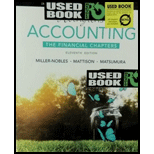
1)
Concept Introduction:
Forms of organizational structures of Businesses
• Several options exist for creation of new entities such as
• For instance, when the objective is to form a joint venture for a short duration, a partnership firm is the most appropriate since it allows for quick distribution of
• Similarly, opting for the corporate structure of organization of business comes with its own set of merits and demerits. Some of the advantages include perpetual continuity, separation of ownership from management, distinction of personal and business assets and liabilities etc.
Main advantage of corporate structure of ownership
2)
Concept Introduction:
Classes of shares:
• Shares provide partial ownership or a “share” of a corporation. There are two primary classes of shares – Equity Shares and
• Equity shares are the class of shares which carry voting rights and equity share holders are the true owners of the company as in the event of dissolution, equity shareholders get last preference in clearing the amounts invested and there is no guarantee of profits / dividend on an annual basis.
• Preference shares are the class of shares which do not carry voting rights and in the event of dissolution, preference shareholders get first preference in clearing the amounts invested and there is usually guarantee of profits / dividend on an annual basis. Convertible Preference shares are preference shares that carry the option to be converted into equity shares after certain duration.
Which class of shares should be issued?
Requirement 3
Concept Introduction:
Calculation of Shares to be issued
• Shares provide partial ownership or a “share” of a corporation. There are two primary classes of shares – Equity Shares and Preference Shares.
• Equity shares are the class of shares which carry voting rights and equity share holders are the true owners of the company as in the event of dissolution, equity shareholders get last preference in clearing the amounts invested and there is no guarantee of profits / dividend on an annual basis.
• In the event that the capital to be issued is decided, the number of shares to be issued is calculated as the capital to be raised divided by the issue price of the equity shares.
To Calculate:
Number of shares to be issued.
Want to see the full answer?
Check out a sample textbook solution
Chapter 13 Solutions
Horngren's Accounting, The Financial Chapters (11th Edition) - Standalone Book
- Eagles Manufacturing uses the declining balance method of depreciation. They purchased a machine for $160,000 with an estimated salvage value of $20,000 and a useful life of 5 years. Using a declining balance rate of 30%, calculate the depreciation expense for the second year of the machine's use.arrow_forwardCan you explain the correct methodology to solve this general accounting problem?arrow_forwardPlease given correct answer for General accounting question I need step by step explanationarrow_forward
- I want to this question answer for General accounting question not need ai solutionarrow_forwardVincent Company's cost of goods sold is $640,000 variable and $510,000 fixed. The company's selling and administrative expenses are $420,000 variable and $630,000 fixed. If the company's sales is $2,350,000, what is its net income/loss?arrow_forwardDakota Manufacturing uses a standard cost system in which manufacturing overhead is applied to units of product on the basis of standard machine hours. During April, the company used a denominator activity of 40,000 machine hours in computing its predetermined overhead rate. However, 52,000 standard machine hours were allowed for the month's actual production. If the fixed manufacturing overhead volume variance for April was $9,000 unfavorable, then the total budgeted fixed manufacturing overhead cost for the month was $_.arrow_forward
- Whitney manufacturing produces die-cast metal tsve cars for toy shops.arrow_forwardBentley Industries applies manufacturing overhead on the basis of direct labor hours. At the beginning of the most recent year, the company based its predetermined overhead rate on a total estimated overhead of $127,500 and 5,100 estimated direct labor hours. Actual manufacturing overhead for the year amounted to $131,200 and actual direct labor hours were 4,800. The applied manufacturing overhead for the year was closest to __. Helparrow_forwardHello tutor please given General accounting question answer do fast and properly explain all answerarrow_forward

 AccountingAccountingISBN:9781337272094Author:WARREN, Carl S., Reeve, James M., Duchac, Jonathan E.Publisher:Cengage Learning,
AccountingAccountingISBN:9781337272094Author:WARREN, Carl S., Reeve, James M., Duchac, Jonathan E.Publisher:Cengage Learning, Accounting Information SystemsAccountingISBN:9781337619202Author:Hall, James A.Publisher:Cengage Learning,
Accounting Information SystemsAccountingISBN:9781337619202Author:Hall, James A.Publisher:Cengage Learning, Horngren's Cost Accounting: A Managerial Emphasis...AccountingISBN:9780134475585Author:Srikant M. Datar, Madhav V. RajanPublisher:PEARSON
Horngren's Cost Accounting: A Managerial Emphasis...AccountingISBN:9780134475585Author:Srikant M. Datar, Madhav V. RajanPublisher:PEARSON Intermediate AccountingAccountingISBN:9781259722660Author:J. David Spiceland, Mark W. Nelson, Wayne M ThomasPublisher:McGraw-Hill Education
Intermediate AccountingAccountingISBN:9781259722660Author:J. David Spiceland, Mark W. Nelson, Wayne M ThomasPublisher:McGraw-Hill Education Financial and Managerial AccountingAccountingISBN:9781259726705Author:John J Wild, Ken W. Shaw, Barbara Chiappetta Fundamental Accounting PrinciplesPublisher:McGraw-Hill Education
Financial and Managerial AccountingAccountingISBN:9781259726705Author:John J Wild, Ken W. Shaw, Barbara Chiappetta Fundamental Accounting PrinciplesPublisher:McGraw-Hill Education





